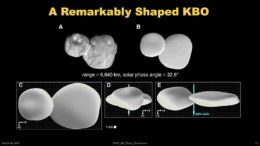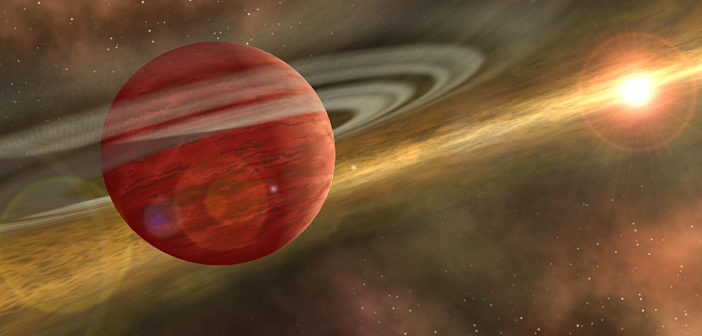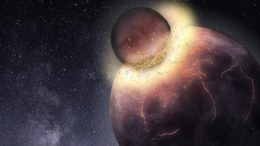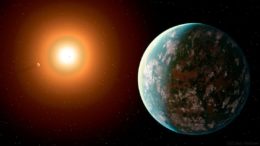Editor’s note: This week we’re in Reykjavik, Iceland at the Extreme Solar Systems (ExSS) IV meeting. Follow along to catch some of the latest news from the field of exoplanet research!
Session 9: Planet Formation
Observations of planet populations provide a rich source of information about how planets might form — shaping our theories and models far beyond what was possible when we only had our own solar system as a guide. Today’s only talk session discussed just a few of our latest ideas about how both rocky and gassy planets are first born and evolve.

The bi-lobed object MU69, as captured by NASA’s New Horizons spacecraft during its flyby. [NASA/Johns Hopkins University Applied Physics Laboratory/Southwest Research Institute]

New shape models of MU69 suggest its two lobes actually have flattened shapes. [NASA/Johns Hopkins University Applied Physics Laboratory/Southwest Research Institute]
Recent research has shown two curious things: first, that super-Earths in the same system tend to be correlated in size, and second, that the entire population of super-Earths observed can be explained by the same core mass (but with different gas masses for their atmospheres). Mickey Rosenthal (UC Santa Cruz) argues that both of these features could be explained by interesting physics of the pebble-accretion model (in which a core rapidly grows by accreting small particles), which create a natural limit to the mass of an accreting core.
Why do we see so many sub-Saturn planets? These bodies have envelopes with the same mass as their cores, lying just on the verge of the runaway gas accretion that should turn them into gas-rich Jupiters. Since this is an unstable state, we expect to see many more Jupiter-like planets than sub-Saturns — yet sub-Saturns and Jupiters are equally common in the inner regions of disks (i.e., within orbits of 100 days). Eve Lee (McGill U) described her models for gas accretion, which indicate that the properties of an accreting planet depend on where in the disk the planet forms, the initial mass of the core, and when in the disk’s lifetime (during the early, gas-rich stage or during the later, gas-poor stage) the planet forms.
Next, we dive deep into planetary interiors, looking at the ratio of core mass to mantle mass in rocky planets. Rocky super-Earths show a wide variety of core-to-mantle mass ratios that can’t all be explained by the ratios we’d expect them to be born with. Jennifer Scora (Toronto) demonstrated that the expected spread can be broadened if many of these bodies underwent dramatic collisions during their lifetimes, stripping material from their mantle. By using realistic N-body models that include collisions, we can therefore use the observed distribution of rocky super-Earth core-to-mantle mass ratios to place constraints on planet formation models.Continuing the theme of giant impacts, John Biersteker (MIT) explored what happens to the atmospheres of planets when they collide. Some of the diversity of densities and compositions observed for super-Earths and mini-Neptunes can be explained by partial ejections of planet atmospheres from the mechanical shock of impacts. But Biersteker argues that consequences of impacts are even more drastic than this: energy from the impact is also deposited into the planet’s atmosphere, heating the gas and causing the envelope to expand. This leads to significant further mass loss as the planet’s gravitational pull can no longer hold in its outer atmosphere — and can potentially strip the planet’s atmosphere entirely.
The final presentation of the day was given by Oza Apurva on behalf of Caroline Dorn (Zurich). Apurva and Dorn are also collaborating to better understand the diversity of super-Earth compositions and densities we observe. Instead of invoking collisions, however, Apurva — like Eve Lee, earlier — argued that the when and where of planet formation can significantly alter the outcome. The dynamics of a planet’s interior, its outgassing history, and its magnetic field are all affected by its radial location in the protoplanetary disk and when in the disk’s lifetime it was born — perhaps naturally explaining the variety of super-Earth properties we see today.The rest of the morning was devoted to a special poster session highlighting the nearly 400 excellent scientific posters (which are also available to view all week during coffee breaks), and the afternoon was left free as an opportunity to explore Iceland!





1 Comment
Pingback: Extreme Solar Systems IV | astrobites